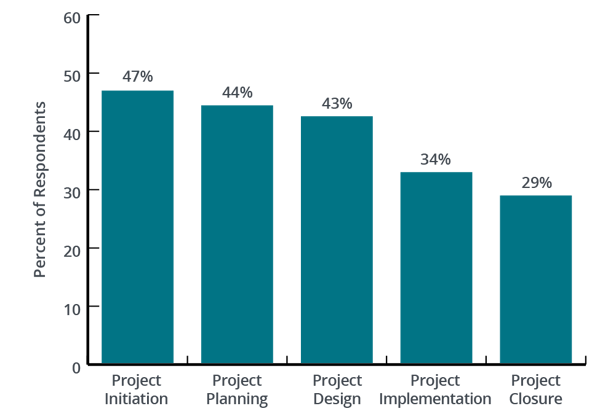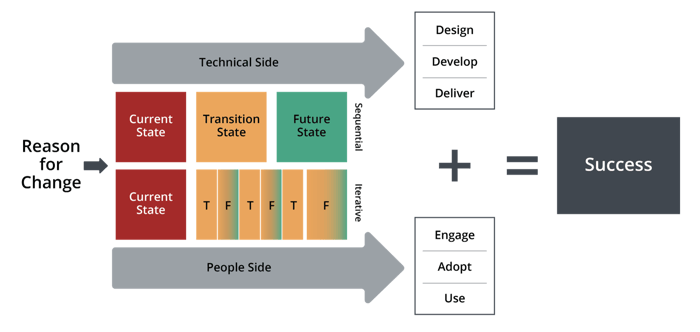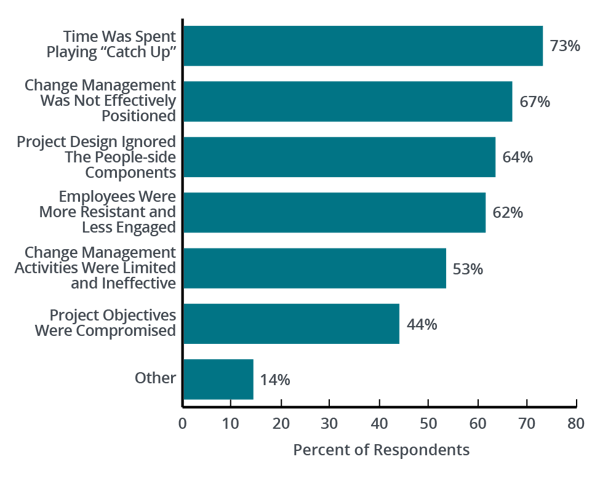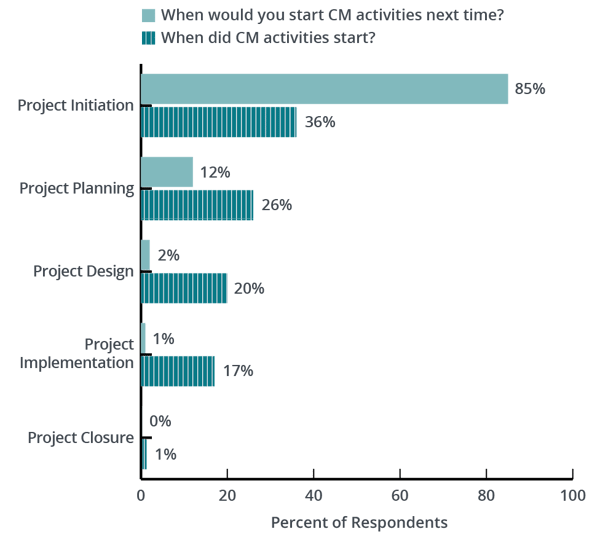When to Integrate Change Management With Project Management

3 Mins
Updated: March 2, 2024
Published: January 3, 2022

Project management and change management are complementary disciplines with a shared objective: success of the project or initiative. But to work most effectively, project teams must integrate these approaches early in the project lifecycle and even before kickoff.
Applying Change Management to Projects
Change management can be applied to many types of business improvement programs—from radical changes like business process re-engineering and organizational mergers to incremental changes like Six Sigma and Lean. Change management (sometimes referred to by project managers as Organizational Change Management or OCM) is the application of a structured process and tools for addressing the people side of change. Such processes and tools include communications, sponsorship, coaching, training and resistance management.
When you're first starting out, it's important to understand that change management is not an event. It is a process of helping individuals understand, internalize and support a change throughout the project's lifecycle. The challenge for project teams is to effectively integrate change management with project management activities—and starting at the right time is critical to your project's success.
Start applying change management to your projects and initiatives
today with Prosci's Change Management Starter Bundle.
-1.png?width=600&name=MicrosoftTeams-image%20(4)-1.png)
When To Integrate Change Management
To see how integration takes place, let's consider a business improvement process and a change management process. At a high level, most business improvement changes (TQM, BPR, Six Sigma, reorganization, etc.) contain five phases:
- Project initiation
- Project definition and planning
- Project implementation
- Project measurement and control
- Project close
Although the change management process will vary according to the methodology you choose, the same five areas above are represented:
When integrating change management with your project management approach, your starting point changes what you do first. If you begin change management when you begin your project, you are able to integrate the change management steps into the project steps. If change management comes in much later in a project, you’ll have to implement change management much differently.
Starting change management at the beginning of a change
Research shows that the earlier change management is started on a project or initiative, the more likely the project is to met or exceed objectives.

Source: Prosci Research Hub
In this scenario, you or someone from your team introduces the importance of change management and the people side of change at the project's initiation. Or perhaps your organization has made a commitment to building change competency and is utilizing change management as a standard practice on every project. In either case, when change management is started at the beginning of a project, the activities can be fully integrated.
 Your first step will be to develop a change management strategy based on the characteristics of your particular change and the attributes of your organization that is being changed. Change readiness assessments will help you decide on your strategy and how you will customize the change management plans you are going to develop.
Your first step will be to develop a change management strategy based on the characteristics of your particular change and the attributes of your organization that is being changed. Change readiness assessments will help you decide on your strategy and how you will customize the change management plans you are going to develop.
Starting change management during project implementation
Unfortunately, change management is sometimes added on to a project after it is well underway. The catalyst for starting change management at this point is usually resistance to the change coming from from employees, supervisors and managers.
In this situation, your project has already begun to experience difficulties, including productivity declines, resistance, and possible loss of valued employees (all of which can be prevented or minimized when you integrate change management at the planning stages of the project lifecycle).
Prosci research participants identified several consequences of starting change management late in the project.

Source: Prosci Research Hub
But starting change management at any point will help you get your project on track. Your first activity is to find out what has already happened. You must take the pulse of the organization, identify the source of resistance, why it has emerged, and manage it effectively and quickly. After you have controlled the damage that is already done, you move into the change management process and develop a strategy for the rest of the project.
Research on Integration of Change Management and Business Process
Project teams in organizations regularly practicing change management agree that it should be brought on as early as possible. In Prosci's Best Practices in Change Management research, we asked participants when they started change management on their projects, and when they would start change management on projects the next time:

Source: Prosci Research Hub
The Value of Integrating Change Management
Although integrating change management can add value at virtually any time in the project lifecycle, maximizing potential benefits requires an early start. If you start at project initiation, you can increase your project's return on investment while avoiding many of the costs and risks that have long-term impacts on your organization, including missed milestones, budget overruns, employee resistance, and much more.




